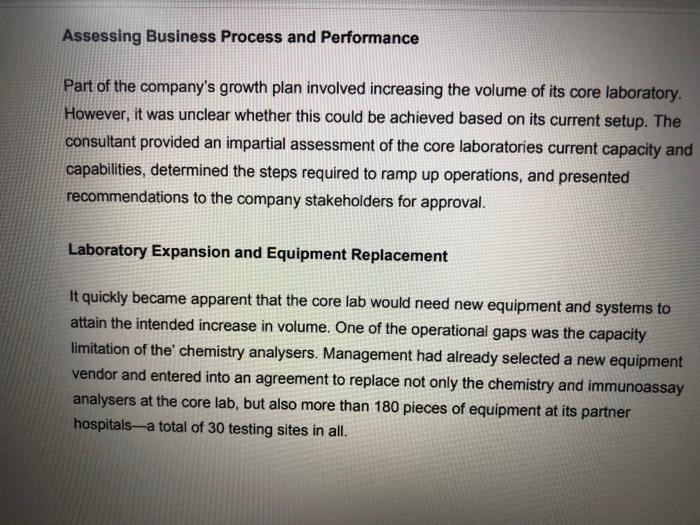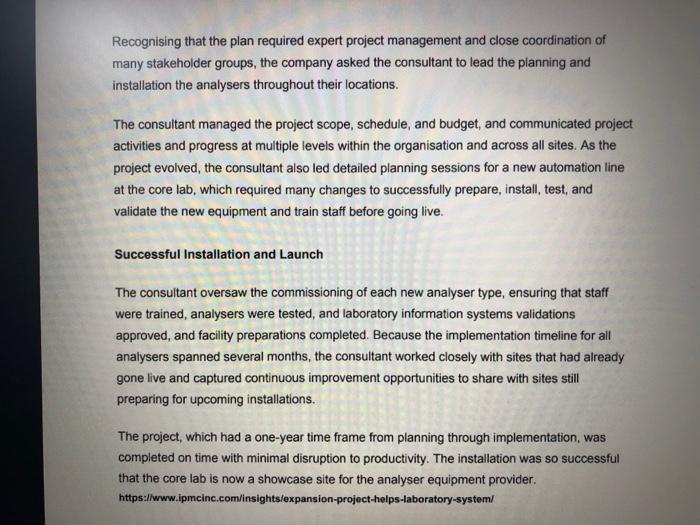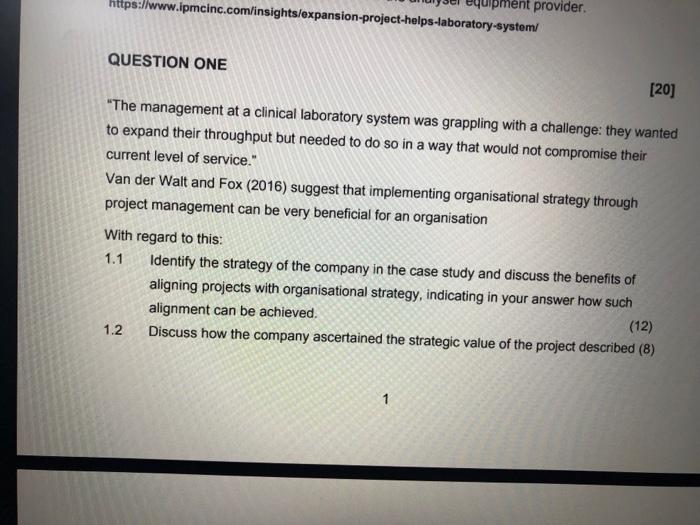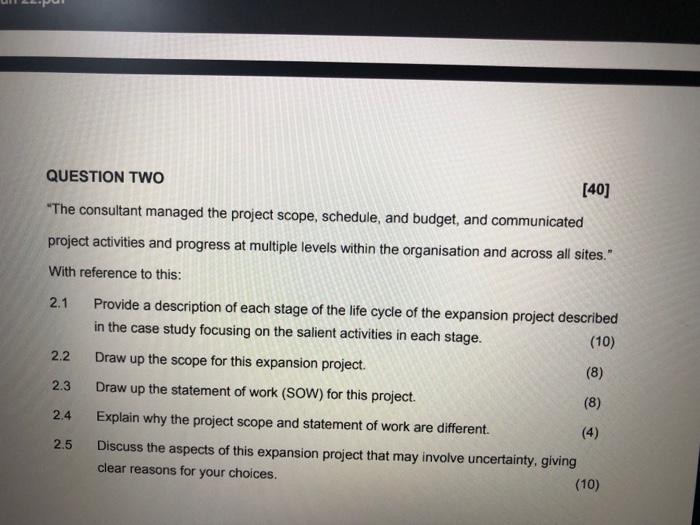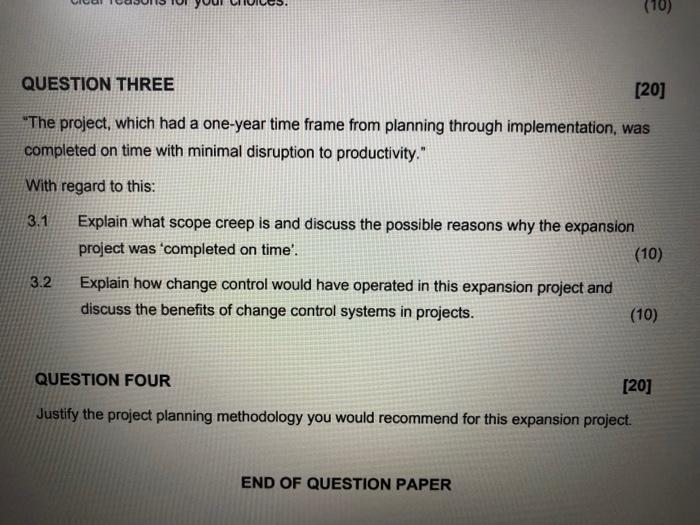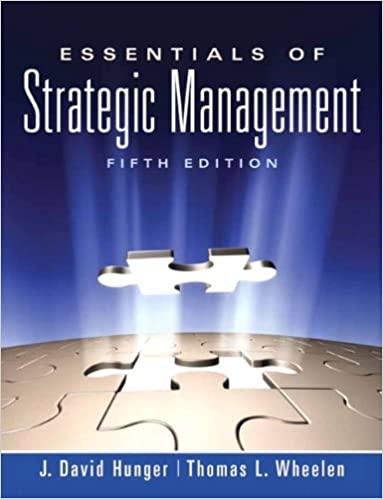Read the following case study and answer all the questions that follow: Successful expansion project helps laboratory system gear up for growth The management at a clinical laboratory system was grappling with a challenge: they wanted to expand their throughput but needed to do so in a way that would not compromise their current level of service. Part of the challenge was the complexity of the work itself. Their laboratories perform several hundred different types of tests for hospitals and other clients on a wide range of specimens, each collected and transported in unique containers. In the previous year, the laboratories had processed and performed more than 4.5 million tests - with more than 400 associates in the core lab and more than 1600 in the entire system working three shifts a day, 365 days a year, to keep up with demand. Because many of these tests have serious implications for the more than one million patients involved, quality and reliability are critical. Spurred by the aggressive growth objectives of a five-year strategic vision, the company hired a Project Management Consultant to ensure execution of initiatives critical for evolving its operations. Assessing Business Process and Performance Part of the company's growth plan involved increasing the volume of its core laboratory. However, it was unclear whether this could be achieved based on its current setup. The consultant provided an impartial assessment of the core laboratories current capacity and capabilities, determined the steps required to ramp up operations, and presented recommendations to the company stakeholders for approval. Laboratory Expansion and Equipment Replacement It quickly became apparent that the core lab would need new equipment and systems to attain the intended increase in volume. One of the operational gaps was the capacity limitation of the' chemistry analysers. Management had already selected a new equipment vendor and entered into an agreement to replace not only the chemistry and immunoassay analysers at the core lab, but also more than 180 pieces of equipment at its partner hospitals - a total of 30 testing sites in all. Recognising that the plan required expert project management and close coordination of many stakeholder groups, the company asked the consultant to lead the planning and installation the analysers throughout their locations. The consultant managed the project scope, schedule, and budget, and communicated project activities and progress at multiple levels within the organisation and across all sites. As the project evolved, the consultant also led detailed planning sessions for a new automation line at the core lab, which required many changes to successfully prepare, install, test, and validate the new equipment and train staff before going live. Successful Installation and Launch The consultant oversaw the commissioning of each new analyser type, ensuring that staff were trained, analysers were tested, and laboratory information systems validations approved, and facility preparations completed. Because the implementation timeline for all analysers spanned several months, the consultant worked closely with sites that had already gone live and captured continuous improvement opportunities to share with sites still preparing for upcoming installations. The project, which had a one-year time frame from planning through implementation, was completed on time with minimal disruption to productivity. The installation was so successful that the core lab is now a showcase site for the analyser equipment provider. https://www.ipmeinc.com/insightsiexpansion-project-helps-laboratory-system/ QUESTION ONE [20] "The management at a clinical laboratory system was grappling with a challenge: they wanted to expand their throughput but needed to do so in a way that would not compromise their current level of service." Van der Walt and Fox (2016) suggest that implementing organisational strategy through project management can be very beneficial for an organisation With regard to this: 1.1 Identify the strategy of the company in the case study and discuss the benefits of aligning projects with organisational strategy, indicating in your answer how such alignment can be achieved. 1.2 Discuss how the company ascertained the strategic value of the project described (8) QUESTION TWO [40] "The consultant managed the project scope, schedule, and budget, and communicated project activities and progress at multiple levels within the organisation and across all sites." With reference to this: 2.1 Provide a description of each stage of the life cycle of the expansion project described in the case study focusing on the salient activities in each stage. (10) 2.2 Draw up the scope for this expansion project. (8) 2.3 Draw up the statement of work (SOW) for this project. (8) 2.4 Explain why the project scope and statement of work are different. (4) 2.5 Discuss the aspects of this expansion project that may involve uncertainty, giving clear reasons for your choices. (10) QUESTION THREE [20] "The project, which had a one-year time frame from planning through implementation, was completed on time with minimal disruption to productivity." With regard to this: 3.1 Explain what scope creep is and discuss the possible reasons why the expansion project was 'completed on time'. (10) 3.2 Explain how change control would have operated in this expansion project and discuss the benefits of change control systems in projects. (10) QUESTION FOUR [20] Justify the project planning methodology you would recommend for this expansion project

